Sea Serpents Likely To Be Discovered
Posted by: Loren Coleman on March 24th, 2009
Few new peer-reviewed papers are as highly anticipated as the one announced below that has been published today. The floodgates to similar examinations of significance in mammalogy, zoology and cryptozoology will now be opened with this publication indicating the first new wave in such discussions! Congratulations to the authors.
Henry Gee, editor of Nature said, with the discovery of Homo floresiensis, that Cryptozoology had “come in from the cold.”
I find, as the breaking tide of the 21st century begins lapping at our feet, due to this paper, indeed, that Cryptozoology can now come out of the cold water.
Michael A. Woodley, Darren Naish and Hugh P. Shanahan have had published on Tuesday, March 24, 2009, in the new number of Historical Biology (2009), their groundbreaking paper, “How many extant pinniped species remain to be described?”

Darren Naish and Michael Woodley work together on their paper. (Photo: Dr. Mark Witton. Click on image for larger version.)
Here is their press release on the contribution:
Three new large marine mammals, so-called sea-serpents, are extremely likely to be discovered according to researchers.
In a paper published today, a team of scientists conclude that three new unusual species might await discovery, all of which may belong to the group of marine mammals known as pinnipeds. The best known pinnipeds are seals, sea lions and walruses.
The team used a combination of statistical analysis and eyewitness reports to evaluate the existence of unknown large sea animals.
Led by doctoral student Mr Michael Woodley of Royal Holloway, University of London, who worked with Dr Darren Naish of the University of Portsmouth, and Dr Hugh Shanahan, also of Royal Holloway, the team used two different statistical models to estimate the number of unknown pinnipeds. The paper was published in the academic journal Historical Biology.
“While the low number of three possible new pinniped species matched our statistical expectations, there is a need for scepticism as all known pinnipeds are noisy animals with close ties to land”, said Mr Woodley.
“These pinnipeds would have to possess some exceptional characteristics, if they exist.”
One of the team’s two models suggested that 15 such species might remain to be discovered, however that was regarded as a significant overestimation, Mr Woodley said.
According to the researchers the discovery of several large marine animals during the last 30 years demonstrates that there are sea mammals in existence which have so far remained undiscovered.
Examples of these animals include the Lesser or Peruvian beaked whale, a strikingly marked whale from the eastern Pacific, which was discovered in 1975; the Megamouth, a giant, filter-feeding shark known from tropical seas worldwide, discovered in 1976; and the Indonesian coelacanth, a deep-sea fish with a striking metallic sheen, was discovered in 1998. Omura’s whale, a close relative of the gigantic Blue whale, was only discovered in the late 1970s.
The study of animals that have yet to be verified by science – sea-serpents and similar enigmatic creatures – is known as cryptozoology. According to Mr Woodley, cryptozoological literature includes hundreds of accounts of mysterious large marine animals, many going back hundreds of years.
“Many sightings have been made by trained observers, including military personnel and experienced naturalists,” he said.
“Over the years, cryptozoologists have suggested that several sea-serpents might be unusual types of pinniped.”
Among the best known of these is a creature sometimes called the merhorse. Supposedly a gigantic, long-bodied, deep-water animal 4 to 30 meters long, it is not only known from sightings, but also from a carcass found in the stomach of a whale in 1937.
A second relevant mystery animal is the long-necked sea-serpent, supposedly a plesiosaur-like sea lion with a 2-3 meter long neck. A third creature is the Tizheruk, a semi-mythological seal-like water monster of the Pacific Arctic is described as long-bodied, and with a snake-like head.
“We consider that if such creatures as the merhorse and long-necked sea-serpent exist, they must be extremely rare. They must also dwell in remote and seldom visited regions of the oceans,” said Mr Woodley.
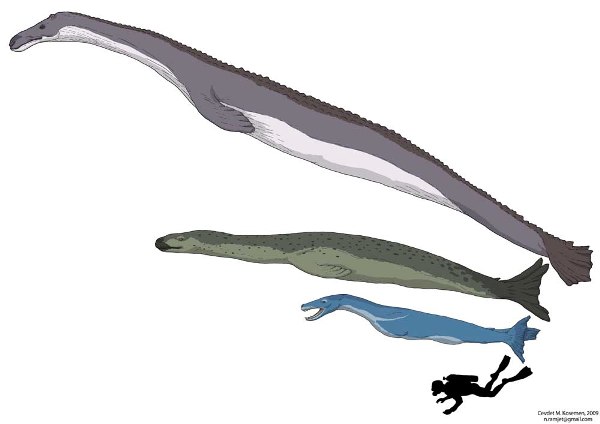
Pinniped images support the new paper. Click on the plate above for a larger version.
Color illustration credited to Cevdet Koseman, 2008. The drawing above shows a Merhorse/Cadborosaur, Long-necked Seal and Tizhurek, to scale with a diver.
Within the paper, there is included, “Figure 3. (a) Reconstruction of Cadborosaurus willsi after LeBlond and Bousfield (1995); (b) The ‘long necked seal’ as depicted in Parsons (1751); (c) Reconstruction of Tizheruk after Mackal (1983). (d) Reconstruction of the swan-necked seal A. longirostris after de Muizon (1981).”
Here is the paper’s abstract:
Large extant marine vertebrates continue to be discovered and described: during the late twentieth and early twenty-first century, several cetaceans and chondrichthyans exceeding three meters in total length have been described, including the megamouth shark, Omura’s whale, Bandolero (or Peruvian or Lesser) beaked whale, and Perrin’s beaked whale. Statistical methods have been employed by several workers in an effort to estimate the number of such species that remain to be described, and results indicate that between 10 and c. 50 such species remain. Here, we examine the description record of the pinnipeds using non-linear and logistic regression models in an effort to determine how many members of this group might remain undescribed. Regression based on a Michaelis – Menten function suggests that as many as 15 such species remain, whilst logistic regression suggests a far lower number (closer to 0). We combine these approaches with an evaluation of cryptozoological data, as ethnozoological evidence suggests the existence of several large-bodied marine vertebrates that have been interpreted by some authors as unusual pinnipeds. These include the so called ‘long-necked sea-serpent’, ‘merhorse’ and ‘tizhurek’. Because cryptozoological data are mostly discussed in the ‘grey literature’, appraisals of these cryptids have never appeared in the mainstream literature, perpetuating a cycle whereby these putative animals remain unevaluated.
For those unfamiliar with Tizheruk, according to work done by Roy Mackal, it is a mythical large snake-like creature that is said to inhabit the waters near Key Island, Alaska, as carried in the oral tradition of the Inuit (and among some Eskimo, a local name for a group with similar genetic background but different cultural alignments). This pinniped-like cryptid is said to have a 7-ft-long head and a tail with a flipper. The local natives claim that it has snatched people off piers without the humans noticing its presence. It is also called Pal-Rai-Yûk. It is said to be similar to Naitaka of the Okanakanes (Ogopogo) and the Haietlik of the Nootka.
Darren Naish highlights the paper, in some detail, at his Tetrapod Zoology blog today. You may read more there, in “Statistics, seals and sea monsters in the technical literature.”
The paper itself (I have seen the almost final draft in pdf) has some important passages on how cryptozoology is to be viewed in this research:
The naive view that cryptozoological research methods are only practised by people on the fringes of the scientific community, and furthermore consistently result in failure, is falsified by the fact that new species continue to be discovered following the investigation of eyewitness reports, deductive inference and/or ethnozoological knowledge systems.reluctance of many technical zoologists to take these proposed creatures seriously.
And later….
Cryptozoologists have long speculated on the possible existence of undiscovered species of pinniped, and cryptozoological research methods have been used to investigate reports of pinnipeds or pinniped-like marine mammals. Richards (1994) investigated cases of a supposed ‘upland seal’ reported from the Antipodes and Macquarie islands: suggested by some authors to be a distinct, recently extinct species (Falla 1948; Csordas and Ingham 1949; Shaughnessy and Fletcher 1987), ‘upland seals’ were argued by Richards (1994) to be young individuals of the New Zealand fur seal Arctocephalus forsteri. Several authors have evaluated eyewitness reports of alleged ‘sea cows’ reported from Saint Helena (Lydekker 1899; Mortensen 1933; Fraser 1935; Shuker 2003), and based on descriptions have concluded that the animals most likely represented known pinnipeds, with the Cape Sea lion A. antarcticus and Southern elephant seal Mirounga leonina being offered as the most likely identifications. Boyd and Stanfield (1998) used interview data to assess the possible survival of the Caribbean monk seal Monachus tropicalis beyond its probable extinction date of 1952. Sporadic sightings beyond this date suggest that the species might survive in the region: the data collected by Boyd and Stanfield (1998) indicated that local fishermen had witnessed the species 1 – 2 years prior to 1997.
Let me underline this point, through another passage from this fine paper. As the authors of the paper note, “The exclusion of many cryptids from the formal literature has prevented technical appraisal. In turn, this has helped perpetuate a cycle in which these alleged creatures remain predominantly in the ‘grey literature’ and are never really objectively assessed,” (Woodley et al. 2009, p. 5).

As is clear from the journal article, the authors are supporting the separateness, apparently, of the Long-Neck and the Merhorse of Heuvelmans. I say apparently, because at some point the paper does deal with the Merhorse mane, and in rebuttal to Ivan Sanderson’s respiratory fantasies for the manes, they state, “a far more plausible explanation for these manes might be that they are simply the product of sexual selection, as there appear to be tentative indications of dimorphism in the observational data for this cryptid (Coleman and Huyghe 2003; Woodley 2008).”
Furthermore, in talking of the Long Neck, the paper’s authors note that an “interesting trait with which Heuvelmans imbued this putative pinniped was euryhalinity, as he believed it to be additionally responsible for a number of fresh water cryptid reports, a thesis that has been further developed by subsequent authors, (Costello 1974; Coleman and Huyghe 2003; Cornes 2007; Champagne 2007).” Here again, I see plenty of eyewitness evidence supporting that both Merhorse and Long Neck pinniped accounts, combined as my and Huyghe’s Waterhorse, have been observed in both freshwater and marine environs. The Waterhorse does appear to have the remarkable capability of euryhalinity, that is, being able to withstand large variations in salinity for indefinite periods.
I still consider it more logic to view the Long Neck and Merhorse merely differ age grades and/or genders in one unknown species, versus the unnecessary construct of two different new animals (pinnipeds) to explain the diversity in the eyewitness descriptions.

Dr. Oudemans’s reconstruction of Megophias is above.
The new paper involves several pinniped-oriented sea serpent threads, whether they be Bernard Heuvelmans’ long-necked Megalotaria longicollis, my and Patrick Huyghe’s maned ideas, or C. A. Oudemans proposal in his 1892 book The Great Sea Serpent of the species Megophias megophias, an immense long-necked, long-tailed pinniped.
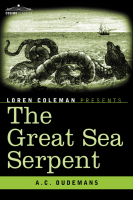
Images of Sea Serpents appeared often, during the 1700s and 1800s, to reinforce the pinniped nature of these cryptids.

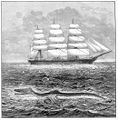
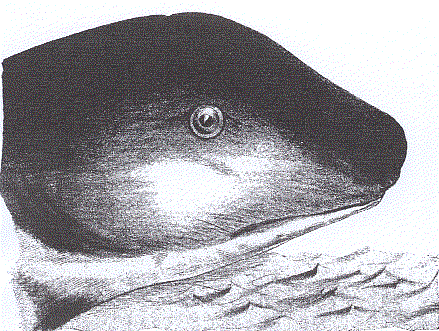
The Historical Biology paper also discusses the remarkable discovery of Parsons’ 1751 Long-Necked Seal.
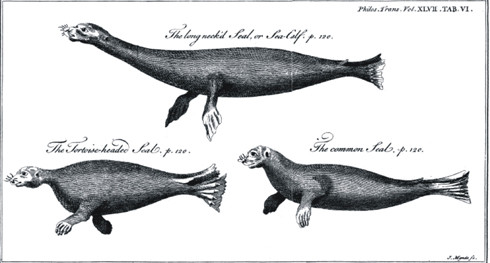
Darren Naish had earlier written about the Parsons’ rediscovery:
…a Long-necked seal was described in the literature long prior to the work of Heuvelmans or even Oudemans. Reporting the observations of a Dr Grew on the Long-necked seal observed ‘in diverse countries’, James Parsons (1751) included an illustration [shown above] and description of this pinniped. He described how it was ‘[M]uch slenderer than either of the former [two other pinnipeds were described earlier in the manuscript]; but that, wherein he principally differs, is the length of his neck; for from his nose-end to his fore-feet, and from thence to his tail, are the same measure; as also in that, instead of his fore-feet, he hath rather fins; not having any claws thereon, as have the other kinds. The head and neck of this species are exactly like those of an otter. One of those, which is also now in our musaeum [sic], taken notice of by the same author, has an head shaped like that of a tortoise; less in proportion than that of every other species, with a narrowness of stricture round the neck: the fore-feet of these are five-finger’d, with nails, like the common seal. Their size, as to the utmost growth of an adult, is also very different. That before described, was 7 feet and an half in length; and, being very young, had scarce any teeth at all’ (Parsons 1751, p. 111).
Quite how a pinniped said at first to have a very long neck is then said to have a head and neck ‘exactly like those of an otter’ I’m not sure, and of course it’s not possible to determine whether this ‘long-necked seal’ has anything to do with Heuvelmans’s hypothetical animal of the same name. It’s tempting to assume that it was a confused description of a sea lion but, given that Parsons described a specimen 2.3 m long as a juvenile, it still sounds like an interesting animal that we’d like to know more about. To confuse things further, Parsons also mentioned a specimen which ‘is but 3 feet long, is very thick in proportion, and has a well-grown set of teeth’ (Parsons 1751, p. 112)….
The tantalising possibility remains that the larger specimen would have been significant in zoological terms, but given that we lack data on the provenance and fate of the specimens that were described by Parsons, any further comments would be entirely speculative. James Parsons, 1705-1770, was a British physician who studied medicine in Paris and later worked under James Douglas in London. As yet I haven’t done any research on the specimens he studied or wrote about, but this obviously should be done. What happened to his long-necked seal, and what was it?
Original source cited by Naish: Parsons, J. 1751. A dissertation upon the Class of the Phocae Marinae. Philosophical Transactions 47, 109-122.
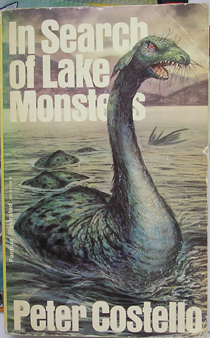
Read all of Naish’s previous info on this here.
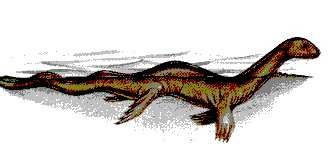
Continue supporting cryptozoology and the museum, please, today, do…
About Loren Coleman
Loren Coleman is one of the world’s leading cryptozoologists, some say “the” leading living cryptozoologist. Certainly, he is acknowledged as the current living American researcher and writer who has most popularized cryptozoology in the late 20th and early 21st centuries.
Starting his fieldwork and investigations in 1960, after traveling and trekking extensively in pursuit of cryptozoological mysteries, Coleman began writing to share his experiences in 1969. An honorary member of Ivan T. Sanderson’s Society for the Investigation of the Unexplained in the 1970s, Coleman has been bestowed with similar honorary memberships of the North Idaho College Cryptozoology Club in 1983, and in subsequent years, that of the British Columbia Scientific Cryptozoology Club, CryptoSafari International, and other international organizations. He was also a Life Member and Benefactor of the International Society of Cryptozoology (now-defunct).
Loren Coleman’s daily blog, as a member of the Cryptomundo Team, served as an ongoing avenue of communication for the ever-growing body of cryptozoo news from 2005 through 2013. He returned as an infrequent contributor beginning Halloween week of 2015.
Coleman is the founder in 2003, and current director of the International Cryptozoology Museum in Portland, Maine.










GREAT! Article. So many pieces of legend, eye-witness accounts, and real science come together in this article that it was a real joy to read.
Excellent article!
Great stuff, this.
Reminds me of the great gap in our understanding of what the ocean’s natural history of abundance was prior to recent history’s record and legacy of industrial/commercial activity for the harvesting of furs, fish, eggs and other once abundant (and some now-extinct) stocks of wild resources.
The ocean is so big and the shores, mangrove complexes, shoals and reefs so barely examined, it’s not too hard to think that somewhere there are refuges that have remained inviolate, or niches and strategies that still defy our cursory attempts to inventory the their every population.
This looks like superb work. Loren may have a point on there being only two species of pinniped.
I still think another animal “out there” is a huge eel, though it would take a thorough examination of the authors’ database of accepted sightings to know whether this could replace one of the mammals.
Two additional tidbits:
Dr. Bruce Robison of MBARI said at least a third of the “large animals” (he didn’t define the term) in the oceans were unidentified, and that may be conservative – “it could be half.”
When I was writing Shadows of Existence (2006), I corresponded with the leading researchers on beaked whales. They were unanimous in believing there were still undescribed species.
IMHO everything is ‘grey literature’. We should try to differentiate the different tones, that’s all 😉
I’m confused, why do they have to be seals again? Why even mammals?
They listed the megamouth and the coelocanth amongst the list of ‘mammals’ discovered as well. They are fish.
Many descriptions are also consistent with relic and unknown marine reptiles as well.
Congratulations to Woodley, Naish, and Shanahan on their thoughtful, well-researched and exciting paper.
I agree with Dogu4. There are vast parts of the ocean we do not anything about. Like Keel said, we know more about the moon than about our own oceans. And given the increase in sightings over the years by reliable witnesses, it does not take a brain scientist to reason that something previously “undetected” will make itself known.
Very encouraging.
Very cool article!
I have always thought that with the oceans as big as they are, if you are going to have water cryptids, that is the place where they have the best habitat with unlimited food sources and so on.
Arthur C. Clarke in one of his documentaries on water critters thought that the oceans were a place where, if there were undiscovered water critters, they would most likely be. Now he wasn’t optimistic on the lake monster front (and I will disagree with him, but we can still get along), but he was definitely open minded on the subject!
Very interesting could be a significant catalyst for break through into mainstream science. Certainly should have some positive impacts,potentially add some credibility and undo some of the damage done by the constant ill thought media hyped fakery in the field.
On a skeptical note I am well aware of the use of statistical models essentially to prove or more accurately disprove almost any (null) hypothersis using the right tests and data. However such tests are usually well screwtinised in peer reviews. No publication want to risk its scientific integrity as this it how they make their money the link
I will be very interested int the methodology and how they establish the link between a mathematical out come and assumption based on sightings and historical evidence. This will have to be well justified. It is one thing to say that the stats suggest there will be other species but to speculate on what these may be is another step entirely. After all many of the most recent new species are close relatives of those that are known and just a product of ‘splitting’ or taxonomic inflation or improved genetic knowledge.
Right, sorry, critical review over, should not say another word until reading the whole paper, made that mistake all too regularly as an undergrad!
Odds and ends in response to comments (I’ve not talked to the authors, this is just my mental output):
The authors did not say megamouth and the Indonesian coelacanth were mammals. They said they were examples of recently discovered marine vertebrates.
Here’s a better source on that quote: Marine biolologist/oceanographer Dr. Sylvia Earle: “The reality is we know more about Mars than we know about the oceans.”
As to why the authors opted for the pinniped identity, we are just going to have to wait and read the full paper for the details of their logic. As noted above, I wondered about eels. It may be that reptiles required more radical evolutionary changes that did mammals to fit the best sightings.
Glad to see Darren is still carrying the torch for real exploratory science.
If there are any undiscovered pinnipeds, they are almost certainly pelagics that never come to land. (Unless we’re just not noticing one of those hairline “species” distinctions in populations of known ones.) The elephant seal, to name one, is far enough in that direction that I can certainly see one going the extra step and skipping the land part.
I guess though that I don’t see moving from “new beaked whales” to “almost certainly undiscovered pinnipeds.” There’s no more of a connection there than there is between recent mammal discoveries and the possibility of hairy hominoids. Just me, maybe, but there it is.
Water borne cryptids have always been my favorite subject, probably because I have always lived on the shore.
Men of earlier ages have never struck me as being less intelligent than we are. They simply did not have the scientific framework built upon documentation by others. Printing and publishing powered the great leaps we’ve made in modern times.
My point is this. Since the age of sail (which is a virtually soundless form of propulsion allowing explorors to more easily approach shy creatures), these animals have been identified overwhelmingly as “serpents”. Even allowing for the lack of scientific classification systems, this word usually denoted a snake, a “dragon” or a reptile of some sort.
I would think that any experienced explorer would recognise a giant seal.
I’m not saying there are no large pinipeds. But I don’t think that theory covers all the descriptions.
I witnessed a large “sea-serpent” many years ago (at a distance) in Portsmouth, RI. I’m certain it was an enormous eel.
Great article. But why do large cryptids from the ocean tend to be called “serpents?” To me, the word “serpent” implies its some kind of snake or reptile. How about just calling them “sea creatures” instead?
MattBille:
I THINK you were addressing me. The quote from Keel I got from one of his books. He probably was paraphrasing Sylvia Earle. Probably so.
Who knows…
ONLY ONE GOOD-SIZED PROBLEM: A LOT OF PEOPLE THINK THAT WE ARE ALL LOONY
Its going to be difficult to discover more species without more people with us, and we would have to catch one that everyone says is fake and have it confirmed as a real species before more people start joining in, though there will always be someone who thinks they faked it.
The more the merrier.
Personally I think outside the scientific community, the term “serpent” has always been used to describe a very diverse range of animals.
In particular, many articles (i.e. even the official German Wikipedia article) describe the leopard seal as having decisively reptile-like features. Do a photo-search on Google and judge for yourself.
I therefore favor another large unknown species of the genus Hydrurga as a possible candidate for at least one of the “yet-to-be-discovered” sea serpents. Imagine a huge cousin of the leopard seal… could be a PMP (pretty mean predator) … 😉
Having read the paper, I now understand that the authors were not trying to explain all or even most sea serpents (SS) as pinnipeds. SS identity was not the problem they were trying to solve.
They started with the question of whether there might still be pinnipeds left to discover and then looked at SS reports for sightings that might support the idea of unknown pinnipeds. They came away with the conclusion, based on statistical analysis, sighting reports, and other tools/inputs, that there might be as many as three pinnipeds, all unusual and one spectacular, left to be discovered. One interesting inference is that we may have found all the “normal” pinnipeds (that is, the ones whose habits and appearance are what we expect for the order Pinnipedia.
You might say that what they did was take Charles Paxton’s question of how many large marine animals were left to be discovered and narrow it to ask how many of a certain group, in this case pinnipeds, might be unclassified.
This does not mean all SS are pinnipeds: there is room left for giant eels and whatever other conjectured creatures might fit certain reports.
The authors are to be commended for a new approach to the whole “mystery animal” question, creating a repeatable methodology others might apply to sharks, eels, whales, or other groups.
I should have added that the authors’ methodology is not confined to marine animals. It could, for example, be used on birds, crocodilians, or primates, where it might shed an interesting light on the quest for unknown large primates that occupies so much of cryptozoology.
Darren Naish has discovered that a typo swam into the press release for this paper, in which he had incorrectly given another name for the (correct) tizheruk.
Therefore, I have expunged that wrong cryptid name (tizhurek) from this posting.
I’m surpised, nobody in article or posts mentioned the bunyip, so I’m mentioning it.
BUNYIP!!!
The “BUNYIP” described in some instances as a having characteristics of a giant otter as well as other entanglements of various other creatures/species. Thus a giant tiger-seal like creature COULD fit something along those lines, maybe. Perhaps these creatures would explain such accounts of the legendary Bunyip.
Also, nobody mentioned the similarity of the “Merhorse” to the “TURKISH LAKE MONSTER”!
The first creature in the illustration above they are calling a “merhorse” and is illustrated with ridges and the first thing that popped into my mind was the description of the “Turkish Lake Monster”. The Turkish Lake monster has been described as being very large, and having a horse or camel-like face by eye witnesses, much like the creature described in the article, it may also have a ridge along it’s back as also portrayed in the illustration.
The Turkish lake monster does have footage, and the footage demonstrates that whatever the creature is, it is blowing bubbles and appears to be creating a subsonic vibration which can be interpreted as a warning signal, similar if not exactly the same to what hippos or crocodiles/alligators do.
One might also wonder what creatures rumored to have been seen by Jeac Cousteau in the depths of the Siera Nevada Lake Taho? Don’t quote me on the lake and I appologize for my terrible spelling, but it was something along those lines.